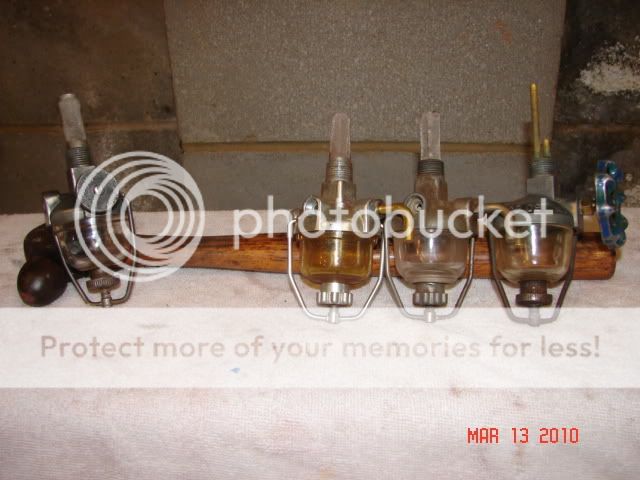Turn the knob off fully, remove the bowl & carefully check the groove in the top of the assembly for dirt/crud/old gasket material. Most leaks on a new gasket are caused by:
1. An incorrectly seated gasket.
2. An incorrectly seated screen.
3. A screen just slightly too big . (get out the scissors)
4. Using gasket sealer
Don?t forget to check the bowl rim for chips; if it?s chipped, you will never get it to stop leaking.
If you want to rebuild the old one, try this:
1. Get out all the carb cleaning tools.
2. Pull it down (bowl off, screen out, stem out)
3. Look at the stem; if it really is OEM, it will have graphite packing, just like a faucet. Get some from the hardware store (NOT teflon!) If it?s a newer replacement OEM bowl, it will have O-rings. Same deal; hardware store for replacements
4. Your call on soaking it in carb cleaner; I didn?t, because I use the real caustic stuff and the metal looks like aluminum. So, I sprayed it out w/ canned cleaner.
5. Make sure you get air through both the main and reserve ports.
6. Use your welding tip cleaners if need be, but I?ve never had one clog bad enough that canned cleaner & air wouldn?t open ?em up.
7. The nut that holds the stem in keeps it from leaking. You need to find the happy medium of ?to tight? (the knob won?t turn) or ?to loose? (it leaks).
8. Replace the screen and gasket; NO sealer on the gasket. If it?s a cork gasket, soak it in gas first.
9. Use pipe dope as a thread sealer when you put it back in the tank.
10. Put the bowl back on & hand tighten the thumb screw. Turn the gas on & look at the bowl. If it starts to fill the bowl, turn the gas off & start over; it has a leak. You will know it's sealed when gas does not flow into the bowl w/ the engine off. It won't fill with the bowl securely on because the float has closed the needle valve in the carb and there is nowhere for the air in the bowl to escape. (assuming the carb bowl is full) When the engine is started the needle valve will open and the trapped air will escape through the carb vent. If you loosen the bowl, it will fill.....and leak.
NOTE: All of the above assumes an OEM style sediment bowl. Trying this on a cheap off-shore POS sold at TSC is a waste of time. The bowl on the left is OEm & was easy to rebuild. The other 3 are examples of what PO's put on their tractor. They leaked & can not be rebuilt. At least by me anyway.
75 Tips

